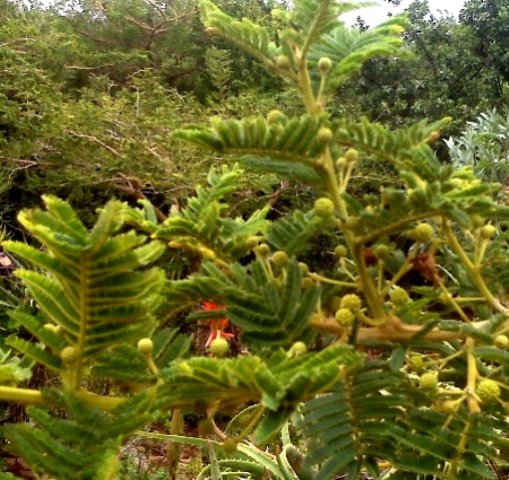Vachellia sieberiana var. woodii budding in spring

Author: Ivan Lätti
Photographer: Emari Linde
The compound leaves of Vachellia sieberiana var. woodii may have from 6 to 23 pairs of pinnae or leaflets. In addition, on each pinna there may still be as many as 45 pairs of pinnules! The doubly compound or bipinnate leaves of this and some other Vachellia trees are truly complex structures. The pinnae are narrow and oblong. The pinnules are elliptic.
At the base of some upper pinnae there are tiny glands on the rachis, the central leaf stalk. The rachis has a short petiole and a large gland just below the lowest pair of pinnae. The leaves may be densely hairy to hairless. Mature leaflets may not point upwards as much as these young ones do in the photo.
The globose flowers, common among members of the Vachellia genus, previously Acacia, grow on straight stalks from leaf axils near branch ends in groups of one to four. Each flowerhead comprises a fluffy, creamy or nearly white, sweet-scented spheres of many tiny flowers. The visible part of the little floral spheres are the many fine, straight hair-like stamens towering over the other floral parts. The size of the little flower-balls varies from 10 mm to 15 mm in diameter.
Blooming happens in late spring. This is one of the late flowering Vachellia species. Sporadic flowering spells may recur during summer or early autumn, depending on rain. In this photo the emergent flowers are still green, in bud form (Coates Palgrave, 2002; Van Wyk and Van Wyk, 1997).

